Subhumid Temperate Climate: [Characteristics, Flora, Fauna and Adaptability]
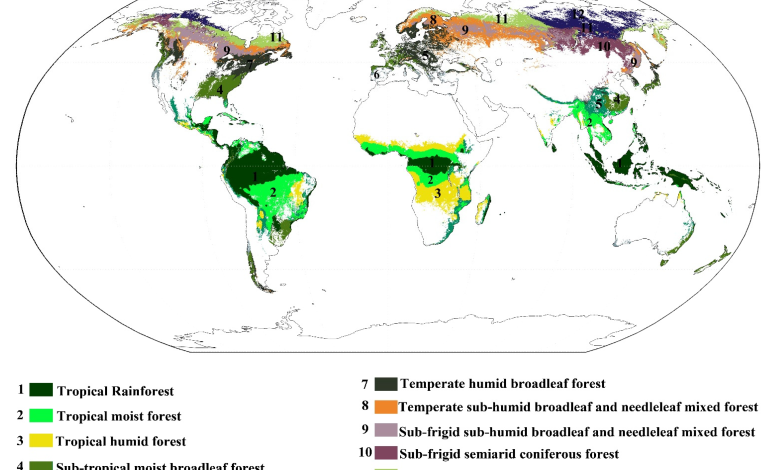
Important points about the sub-humid temperate climate:
- What is? The sub-humid temperate climate is a climate that presents with abundant rainfall in the hot season of the year, while it is dry in the cold season.
- Where it is located? The sub -humid temperate climate is present on all continents except Europe.
- What flora predominates? The flora of the sub-humid temperate climate is rich and varied, being possible to find from creeping species and mosses tolarge trees.
- What fauna predominates? The most frequent species are deer, bears, wild cats (present in America), woodpeckers, squirrels, foxes, among others.
- How long is the day and night? In spaces where the four seasons predominate, winter usually has longer nights and summers are with more daylight hours.
- Can human beings live in this climate? Life in the temperate sub-humid climate is possible in certain scenarios, especially those where altitude levels are lower.
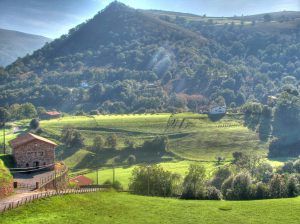 The sub-humid temperate climate is known for having a time of abundant rainfall associated with summer, while winter is dry.
The sub-humid temperate climate is known for having a time of abundant rainfall associated with summer, while winter is dry.
It is not very wide in the world because it is limited to geographical location, since it can only be in the tropics and points close to the equator.
Due to its monsoon conditions, it is a climate that allows the development of many species of life, which offers it greater relevance at an ecological level. What differentiates the subhumid temperate climate from other climates with similar characteristics? It is just what we will see next.
What is temperate subhumid climate?
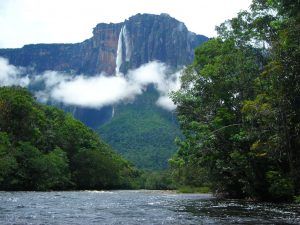 The subhumid temperate climate is a climate that presents with abundant rainfall in the hot season, while it is dry in the cold season.
The subhumid temperate climate is a climate that presents with abundant rainfall in the hot season, while it is dry in the cold season.
Its field of influence is in the areas of higher altitude that are within the latitudes that it covers.
The sub-humid temperate climate can also be called high altitude tropical climate, monsoon climate and in certain cases it is known as mountain climate.
Where is the temperate subhumid climate located geographically?
 The sub-humid temperate climate is present on all continents except for Europe.
The sub-humid temperate climate is present on all continents except for Europe.
Its largest area of concentration is in America, where the Inter-Tropical Convergence Zone (ITCZ) plays a leading role in the development of conditions.
In this way, we can mention its presence in Bolivia, Argentina, Guatemala, Mexico, Peru, Ecuador, Brazil, among others. In Asia it can be seen in India.
What characteristics does the temperate sub-humid climate have?
The temperate subhumid climate has been divided into several types depending on the characteristics of each one. Let’s review them below:
Subhumid subtropical climate
It is a variant of the sub-humid temperate climate that is manifested by the influence of the conditions that surround it according to its geographical area. Here we have:
- Rainfall during warm seasons that occurs in areas with altitudes ranging from 1,000 to 1,700 meters above sea level. These rains can be of torrential intensity in some cases and generally occupy about 2000 mm per year. These characteristics are typical of South American countries such as Argentina, Brazil and Mexico.
- Monsoon rains that are generated during the warm months, including natural disasters due to the presence of hurricanes. These conditions occur in southeastern China and parts of Australia and Argentina.
- A final variation includes a period of heavy rains that occurs after summer and before autumn. Summer and winter are usually dry, but they take refuge in this area of precipitation to tolerate drought. It is a condition typical of India, where there is talk of 6 seasons to refer to the monsoon after summer and the dew before spring.
Subhumid temperate mountain climate
It is a climate that occupies those spaces with altitudes ranging from 1,200 to 3,700 meters above sea level. It is characterized by:
- A cool temperature that revolves around 14º C, although it could exceed 20º C at some times of the year.
- Constant rainfall covering an average of between 700 and 1200 mm per year.
- This temperate sub-humid climate subtype can be observed in the Himalayas and other mountain formations in Argentina, Brazil, Mexico, Africa and Madagascar, among others.
subalpine subhumid climate
This variant of sub-humid temperate climate is characterized by:
- Located in areas ranging from 3,200 to 4,700 meters above sea level. Specifically it is distributed in small segments of Bolivia and Peru.
- It is a mostly cold climate due to the altitude it reaches, occupying from 8º C to 9º C.
What flora predominates in the temperate subhumid climate?
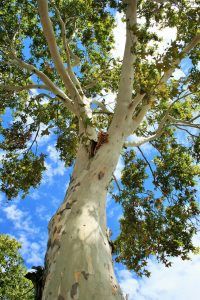 The flora of the sub-humid temperate climate is rich and varied, being possible to find from creeping species and mosses to large trees.
The flora of the sub-humid temperate climate is rich and varied, being possible to find from creeping species and mosses to large trees.
Both perennial and deciduous plants can be seen depending on the place where they are found.
The most characteristic trees are firs, walnuts, some pines and maples, creating large, dense forests with very cool temperature levels.
Regarding the subject of crops, it is possible to plant quinoa, potatoes, carrots, fruits of various types, among others.
What fauna predominates in the subhumid temperate climate?
 The fauna of the sub-humid temperate climate is very varied, although it does not reach the high levels that are found in tropical forests, for example.
The fauna of the sub-humid temperate climate is very varied, although it does not reach the high levels that are found in tropical forests, for example.
The groups shelter from microorganisms to fierce hunters, all forming an important part in the ecological balance of the environment.
The most frequent species are deer, bears, wildcats (present in America), woodpeckers, squirrels, foxes, etc.
When the seasons are generated, it is common for some species to hibernate while others (especially birds) migrate to warmer areas.
How long is the day and night in the temperate sub-humid climate?
 The duration of the days and nights responds more to the location of the place where the temperate sub-humid climate is generated than to the climate itself.
The duration of the days and nights responds more to the location of the place where the temperate sub-humid climate is generated than to the climate itself.
In spaces where the 4 seasons predominate, winter usually has longer nights and summers are with more hours of light.
In those where the 4 seasons do not occur but only the cold and warm stages, it is common for the night of the cold season to last a little longer than the day. However, in the latter case it is not usually perceived with as much accuracy as it does in the arrival of winter and summer.
Can humans live in the temperate subhumid climate?
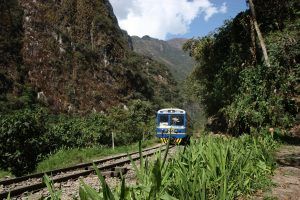 Life in the temperate sub-humid climate is possible in certain scenarios, especially those where altitude levels are lower.
Life in the temperate sub-humid climate is possible in certain scenarios, especially those where altitude levels are lower.
The establishment of urban centers around mountain ranges, such as the Himalayas, is rare.
The main reason is subject to both climate and altitude, as humans tend to prefer flatter spaces to settle.
The sub-humid temperate climate is rarely referred to due to its similarity to other climates, but that does not restrict the importance it has for the balance of the planet.
Bibliographic references
- Effect of climate variability on the state of vegetation and water cover in a temperate climate basin (Argentina), A Brendel, VY Bohn, MC Piccolo – 2017 – ri.conicet.gov.ar
- Kinetic evaluation of a treatment wetland in a temperate sub-humid climate in Mexico, A Rivas Hernández, I Barceló Quintal… – 2017 – repository.imta.mx
- Additions and contributions to the genus Enoclerus Gahan (Coleoptera: Cleridae) in temperate climate forests in Mexico, AF Burke, D Cibrián-Tovar… – Acta zoológica…, 2011 – scielo.org.mx
- Application of Criteria and Indicators in Temperate Climate Ecosystems in Mexico, J Dorantes-Lopez – fs.fed.us
- Performance of an irrigated meadow in a temperate climate, established for grazing with dairy cattle, VL Ramírez, JGG Muñiz, SGL León, EV Gutiérrez… – Veterinaria…, 2002 – redalyc.org
- Challenges and opportunities of feeding small ruminants in temperate storm conditions, JLZ Ramírez, SV López – complex scenarios – ri.uaemex.mx
Maybe you are also interested in:
- Koppen climate classification: [Concept, Characteristics and Types of Climates]
- Alpine Climate: [Characteristics, Flora, Fauna and Adaptability]
- Arid Climate: [Characteristics, Flora, Fauna and Adaptability]
- Temperate Continental Climate: [Characteristics, Flora, Fauna and Adaptability]
- Continental Climate: [Characteristics, Flora, Fauna and Adaptability]
- High Mountain Climate: [Characteristics, Flora, Fauna and Adaptability]
- Climate of Argentina: [Characteristics, Flora, Fauna and Adaptability]
- Australia Climate: [Characteristics, Flora, Fauna and Adaptability]
- California Climate: [Characteristics, Flora, Fauna and Adaptability]
- Climate of Europe: [Characteristics, Flora, Fauna and Adaptability]
- Tundra Climate: [Characteristics, Flora, Fauna and Adaptability]
- Equatorial Climate: [Characteristics, Flora, Fauna and Adaptability]
- Cold Climate: [Characteristics, Flora, Fauna and Adaptability]
- Cold Weather: [Characteristics, Flora, Fauna and Adaptability]
- Mediterranean Climate: [Characteristics, Flora, Fauna and Adaptability]
- Ocean Climate: [Characteristics, Flora, Fauna and Adaptability]
- Polar Climate: [Characteristics, Flora, Fauna and Adaptability]
- Subpolar Climate: [Characteristics, Flora, Fauna and Adaptability]
- Subtropical Climate: [Characteristics, Flora, Fauna and Adaptability]
- Temperate Climate: [Characteristics, Flora, Fauna and Adaptability]
- Humid Tropical Climate: [Characteristics, Flora, Fauna and Adaptability]
- Dry Tropical Climate: [Characteristics, Flora, Fauna and Adaptability]


![Photo of Prune Raspberries: [Importance, Season, Tools, Considerations and Steps]](https://www.complete-gardening.com/wp-content/uploads/2022/08/prune-raspberries-importance-season-tools-considerations-and-steps-390x220.png)
![Photo of Peat: [Characteristics, Utility, Obtaining and Application]](https://www.complete-gardening.com/wp-content/uploads/2022/08/peat-characteristics-utility-obtaining-and-application-390x220.png)
